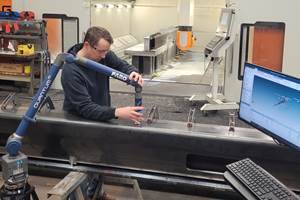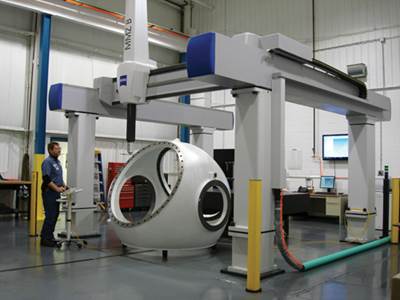ITAMCO’s new precision grinding room is huge. It covers 33,000 square feet of floor space and has a ceiling 30 feet high. Two overhead cranes have been installed, one with a 40-ton capacity and another with 10 tons.
These figures give you an idea of the scale of grinding operations beginning to happen there. All are related to the manufacture of large gears and the assembly or repair of drivetrains (the kind found on wind turbines, off-road construction equipment, mining and oil rigs, for example).
Two Niles gear-profile grinders are already in place. (Niles is part of the German company, Kapp Niles, which is represented in the United States by Kapp Sales & Service, Boulder, Colorado.) One of these, a ZP 40, is one of the largest machines of its kind in the world and the only such machine in the United States. It can do external gear grinding on workpieces as large as 160 inches in diameter and internal gear grinding on workpieces as large as 120 inches in diameter. Across the expansive aisle is a ZPI 25, a slightly smaller machine designed specifically for internal gear grinding on parts as large as 100 inches in diameter. Eight CBN gear grinders are also in place. These machines were relocated to the grinding room from ITAMCO’s original shop and headquarters about 10 miles away.
The design and creation of the precision grinding room has been a major undertaking for the company. Details of the project show how complex and challenging it can be to manufacture very large and very precise parts. Fortunately, ITAMCO was well-positioned to move in this direction. It had an ongoing tradition of gear-making excellence; a willingness to think big and think ahead; and a realistic understanding of how important attention to detail would be. All of this was backed up by a commitment to apply the latest technology, such as 3D facilities planning software and advanced network communications standards.
Things Begin to Mesh
Indiana Technology and Manufacturing Companies (ITAMCO) was founded in 1955 by Donald and Noble Neidig in Plymouth, a community in northern Indiana about 90 miles from Chicago. The original building has been expanded several times and now provides about 100,000 square feet of shop space. The company, however, is still a family-owned and operated enterprise, with the third generation of Neidigs active in managing the business.
Over the years, ITAMCO steadily moved toward the machining of larger and larger workpieces. Many of these parts featured splines, gear rings and other features with gear-like shapes. Making large gears became a growing sideline as the shop expanded. One of the niche areas in gear making that ITAMCO embraced along the way was internal gear grinding—a process requiring special machine tools, inspection equipment and know-how. Few shops could match the company’s ability to produce large, high-precision gears from raw material procurement to finished product.
The company’s natural growth path seemed obvious, especially as strong markets in renewable energy, oilfield and construction called for drivetrains, gear boxes and power transmission assemblies of the larger sort. In 2005, the company started looking at a vacant plant in Argos, about 15 minutes south of Plymouth on U.S. Route 31. This facility had been a stamping plant serving the automotive industry and is four times as large as the original site. The plant had several large, high bays, ample loading docks and a rail connection. After sitting empty for five years, the plant had another attractive feature—a very reasonable asking price. ITAMCO purchased it later that year.
Nevertheless, the decision to renovate this plant and turn it into ITAMCO’s consolidated gear-manufacturing center was a bold step. The centerpiece of this renovated facility is the precision grinding room. Here is what went into its successful launch.
Facilities Planning
A tour of ITAMCO’s original and still-active shop in Plymouth convinces the visitor that this company is used to machining such large workpieces as gear housings for wind turbines and downhole couplings for the oilfield. Even with most of the gear-making and gear-grinding equipment moved to Argos, this shop is filled with large HMCs (all with pallet changers) and lathes (many with live tooling on their turrets) as well as wire EDM units and a metrology lab. “We learned a lot about machining large workpieces and large gears in this plant,” plant manager Dave Hinderlider says. “One of the lessons is that even small errors can be very costly. There’s no room for mistakes.”
This point was certainly taken to heart in the planning of the precision grinding room in the new plant. Joel Neidig, one of the founder’s grandsons and an information systems engineer, cites this lesson as a justification for the company’s reliance on 3D facility planning and layout software that ITAMCO beta-tested for Autodesk, its developer. A self-proclaimed “techie,” Mr. Neidig used this software to create a highly detailed 3D model of the Argos plant, including the bay that would be the new grinding room.
“This model helped us determine the best location for each of the new machines and where the overhead cranes had to be positioned,” he says. “We could also model how utilities had to be arranged and where the foundations for the large grinders had to be poured. We could even spot workbenches and accessories so they’d be convenient for operators without interfering when large workpieces had to be moved.”
The foundations for the large grinders were especially important. These machines are designed to produce gearing to the top quality levels defined by DIN and ANSI/AGMA standards, so they have to be isolated from vibrations, Mr. Neidig explains. Each grinder occupies a 40-by-40-foot pit and sits on a 4-foot-thick concrete pad. Shock-absorbing mounts affix the machines to the slabs beneath. Vibration damping material was installed between the foundation and the surrounding floor to isolate the machines from the earth.
Temperature Control
Another critical issue in the installation of these machines was controlling heat. Keeping the workpiece, grinding wheel and machine structure at a constant temperature is the basis for consistent, highly accurate grinding results, Mr. Neidig says. “Both of the grinders have coolant chilling and filtering systems that recirculate the flood coolant, but heat removed from the coolant has to go somewhere,” he notes. In addition, the 25-ton compressor on each chiller generates more heat.
The solution was to enclose the coolant chilling and filtering systems so that warm air could be ducted outside the building in non-winter months to lower the heat load and save on air conditioning costs. This system draws in outside air to feed the chiller unit, thereby negating the need for a costly makeup air system that adds energy costs. In winter, heat from the compressors is pumped into the room instead of outside. There is enough heat to keep the room comfortably warm while also helping to heat other parts of the building’s interior.
All of the grinders in the room are fully enclosed, ducted and filtered to prevent grinding mist or swarf from affecting air quality. Although enclosing the chillers and machines added to installation costs, the expense has been offset by savings from energy efficiencies and by keeping air in the room clean, dry and at the right temperature.
Capable Grinders
Creating the ideal space for the Niles gear grinders was one of the main objectives for establishing the precision grinding room. These machines were selected for their internal gear grinding capability. The larger ZP 40 uses a special overarm attachment for internal gear grinding, whereas the ZPI 25 incorporates an overarm grinding head designed solely to produce internal gear profiles. Many of the internal gears processed on these machines are drum shapes as tall as 38 inches, requiring the overarms to use their full 24 inches of travel, which is the same on both machines. The ZP 40 accepts parts weighing as much as 88,000 pounds; the ZPI 25, 66,000 pounds.
According to Niles, the internal grinding heads are designed for rigidity and are equipped with a 25-kW (33-hp) grinding wheel spindle. A CNC dresser positioned directly above the grinding wheel enables wheel dressing “in place.”
Both grinders are equipped with on-board inspection systems in which a probe located below the grinding spindle swings up to do measuring operations. This arrangement enables the machine to check a workpiece at any time. Before grinding begins, the probe can ascertain that the workpiece is properly centered to the pitch diameter for accurate grinding. Likewise, the probe can measure a ground surface immediately after the grinding operation.
“On-board checking is a very valuable feature for us,” Mr. Neidig says. “It verifies the accuracy of grinding results and streamlines part processing because the workpiece doesn’t have to be moved to a separate inspection station.”
Also installed on both grinders are two cameras that enable operations to be monitored remotely by sight. Any device with Internet access can “dial in” to the machine’s control and open the camera viewer. In fact, Mr. Neidig has created several iPhone applications for remote machine monitoring (see the sidebar below).
Off-Line Inspection, too
Although the shop has confidence in the on-board checking systems on the grinders, off-line inspection is sometimes required. Certain customers require a CMM-generated inspection report, for example. The company also regularly measures parts offline to calibrate the checking systems. In either case, the company turns to a Zeiss MMZ B CMM that was installed at the Argos plant in 2007.
This gantry-style machine has the capacity to measure parts as large as the rotor hub on a wind turbine. However, it is primarily used to inspect ring gears. The company uses Zeiss’s Calypso software for large prismatic parts. However, it uses GearPro software, also from Zeiss, to streamline gear inspection because that system includes programming routines tailored to capturing dimensional data and geometric relationships that are critical to gear performance.
John Deitl, manager of the Argos plant, emphasizes that a large CMM is essential to the large-part orientation of this facility. “The productivity of the CMM impacts workflow like any other machine or workstation, so we have to treat it like any other value-producing asset,” Mr. Deitl says.
The CMM is located in a climate-controlled room. A heavy-duty crane has been installed to load and unload workpieces.
Supporting Success
Although the precision grinding room is dedicated strictly to finish-grinding gears, the adjoining bay at Argos houses a diverse array of machine tools that feed and support the grinding operations. Large workpieces often make their first stop on one of the VTLs, boring mills or HMCs in this part of the plant before moving to the first gear-cutting operation. Most of these parts will be completed on the new grinders.
The variety of gear-making processes in
this part of the plant is striking. Three of the largest Fellows gear shapers in existence are installed here. These machines feature 15-inch strokes. Numerous other gear-gashing machines occupy one of the aisles. These machines are noteworthy because each is equipped with a gear-milling head that ITAMCO designed and built for efficient rough milling of internal gear profiles. The rotary milling tool can cut deep gear profiles in a few passes. An indexing table makes this operation fully automated. Horizontal gear broaching rounds out the collection of gear-making processes.
Despite the diversity of gear-related operations, Mr. Deitl points out that a unifying influence is the presence of the precision grinding room. Precision grinding is not a corrective process, he explains. It’s the culmination of the precision attained in prior operations. “The success of the precision grinders depends on the success of everything else we do in the plant. This keeps us on our toes,” he says.
Strategic Significance
The precision grinding room plays a key role in ITAMCO’s plans for growth. Gary West, sales and customer service manager, defines growth as doing more business for existing customers and creating new business by adding customers. Both prongs of the strategy are vital, and both are supported by the precision grinding room.
For existing customers, the expanded grinding capacity enables ITAMCO to do more work and handle larger parts to keep up with trends such as bigger, more powerful wind turbine designs. Likewise, precision grinding crowns the company’s ability to handle the complete manufacture and repair of entire drivetrain assemblies—a new business the company is eager to expand. From machining gearbox housings to turning shafts and producing finished gear
components, ITAMCO has all of the processes
in place.
The company is also developing some proprietary innovations in drivetrain technology that could become a distinct product. These developments leverage the capability of its manufacturing resources as well as its design and engineering expertise. Precision internal gear grinding is an integral and essential element in these plans, Mr. West says.
“Gearing up” for this growth commenced in earnest in the midst of the deep recession of 2008 and 2009. “We chose to be bold when everyone else became very cautious. That was clearly the right decision,” Mr. West says.
He can say that looking back now, but it was the company’s willingness to look ahead then that made the difference.
Remote Machine Monitoring in Hand

ITAMCO’s iPhone app for MTConnect makes remote machine monitoring handy.
Two of the newest machine tools at ITAMCO, the Niles grinders are the company’s first to use MTConnect as the communications protocol for remote monitoring. They will serve as prototypes for implementing a company-wide machine monitoring capability. Joel Neidig says plans call for all of the company’s CNCs to have MTConnect adapters that format internally generated data and codes to MTConnect specifications.
This formatting enables an MTConnect “agent” on the shop’s network to retrieve data, organize it, and make it available to software applications such as the company’s homegrown shop-data collection system and job scheduler. Although 30 different types of CNCs are currently in use at ITAMCO’s two locations, MTConnect makes it possible for all of them to output data in a common “language.”
An early proponent and supporter of MTConnect, Mr. Neidig has been active as a member of the MTConnect Technical Advisory Group. He’s also taken the standard a step forward by creating several applications for networkable handheld devices, such as the iPhone and Android. “These apps can be used to dial up the network address of a machine tool’s CNC and access data available through the MTConnect adapter,” he explains. For example, one app enables him to scroll to various screens—such as the one from his iPhone shown here—to view machine status and performance data.
He can also use the iPhone to open the CNC’s live camera viewer to see what is happening inside the machine. “As long as I can access the global phone network with my iPhone, I can monitor our MTConnect-compliant machines from anywhere in the world, right in my hand,” he says.
Mr. Neidig will present his company’s experiences with MTConnect at the upcoming MC2 conference in Cincinnati, Ohio, November 8-10, 2011 (MTConnect.org/MC2). He plans to review his iPhone apps and explain how they provide highly mobile machine monitoring.







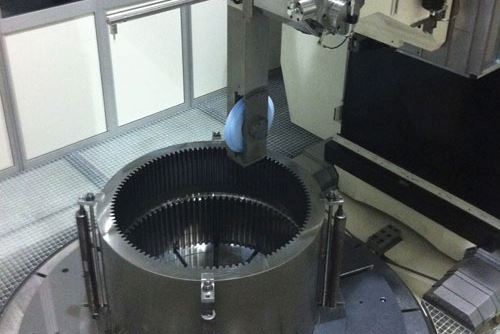

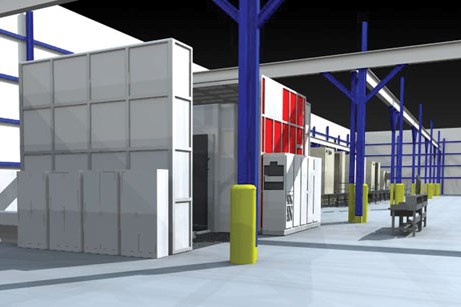
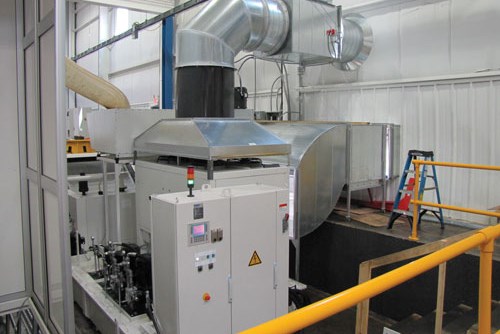
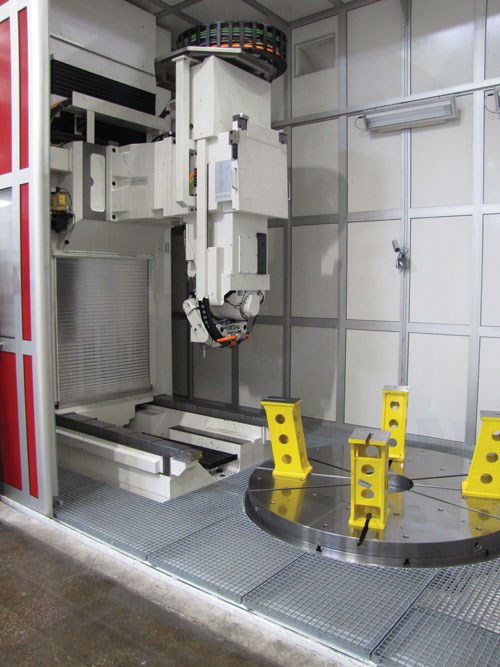
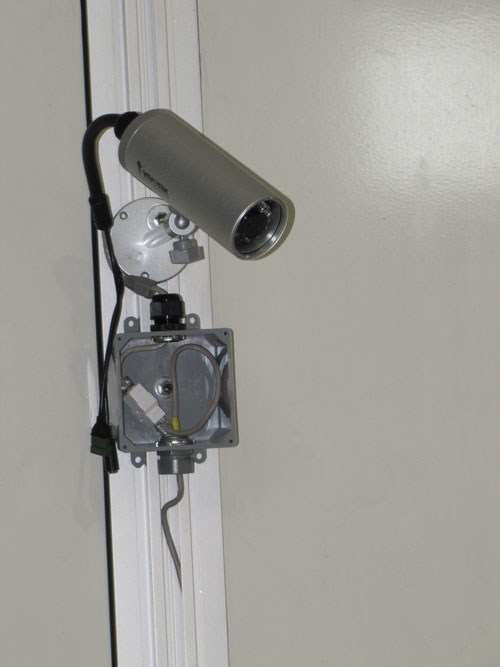
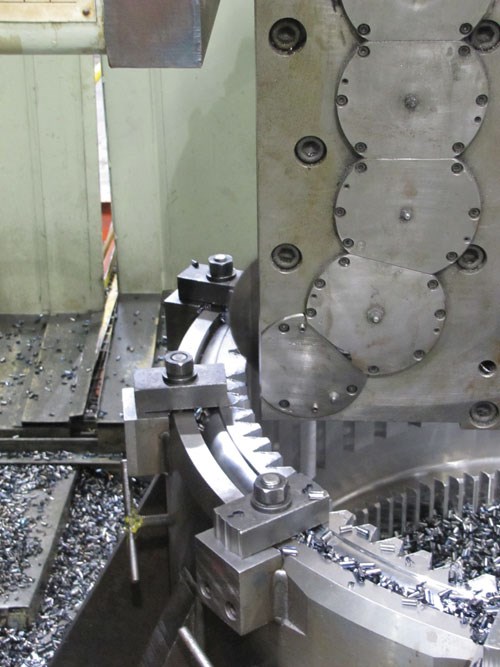
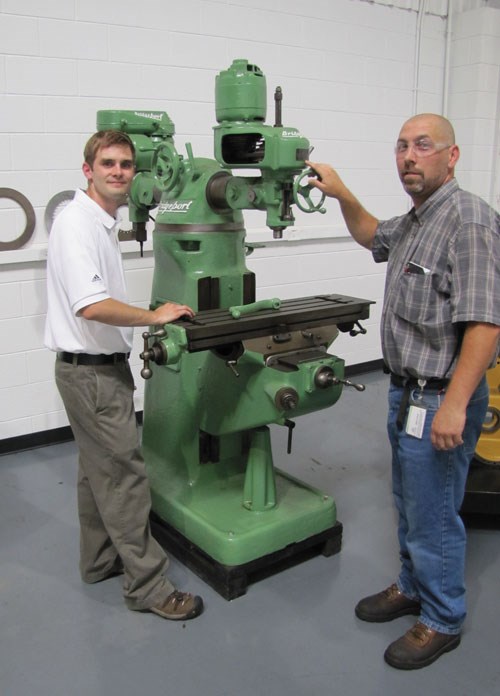















.jpg;maxWidth=300;quality=90)







